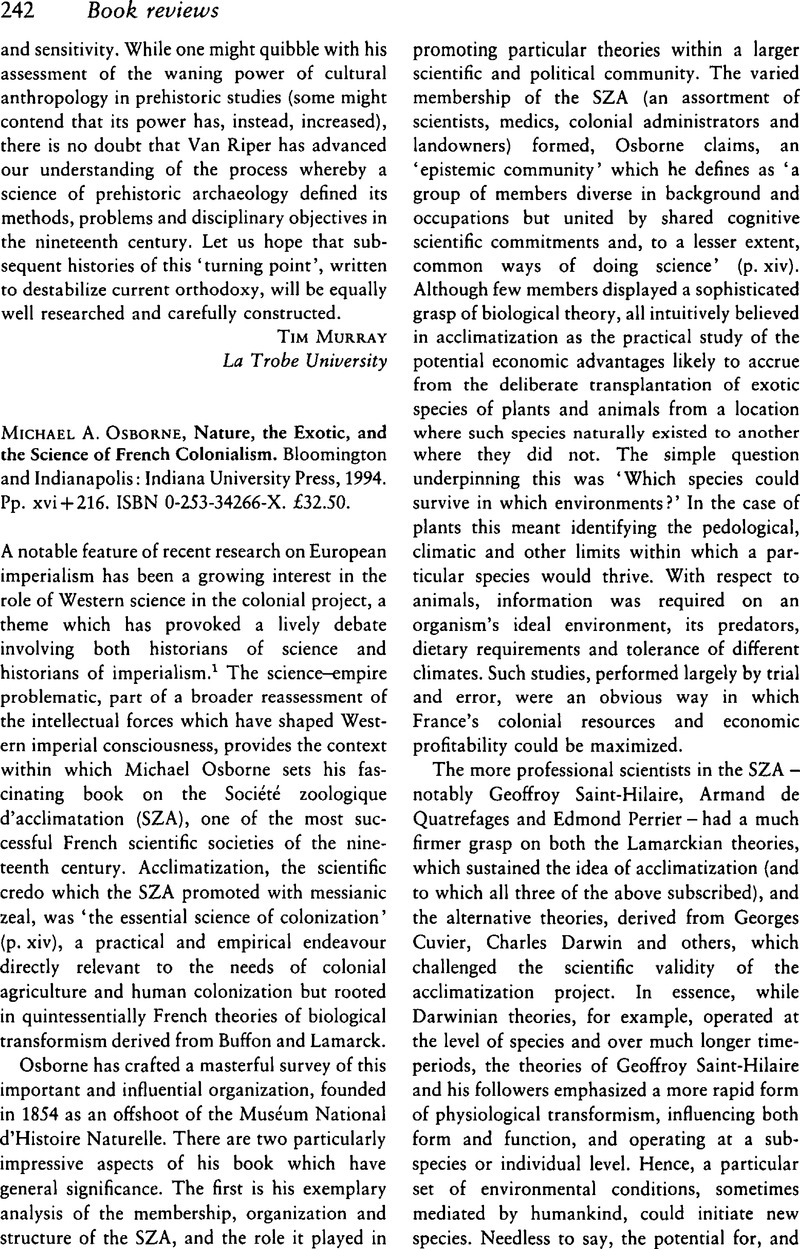No CrossRef data available.
Article contents
Michael A. Osborne, Nature, the Exotic, and the Science of French Colonialism. Bloomington and Indianapolis: Indiana University Press, 1994. Pp. xvi + 216. ISBN 0-253-34266-X. £32.50.
Published online by Cambridge University Press: 05 January 2009
Abstract

- Type
- Book Reviews
- Information
- Copyright
- Copyright © British Society for the History of Science 1996
References
Notes
1 See, for example, Palladino, Paolo and Worboys, Michael, ‘Science and imperialism’, Isis (1993), 84, 91–102.Google Scholar
2 For opening statements in different contexts, see Anderson, Kay, ‘Culture and nature at the Adelaide Zoo: at the frontiers of “human” geography’, Transactions of the Institute of British Geographers (1995), 20, 275–94CrossRefGoogle Scholar; Philo, Chris, ‘Animals, geography and the city: notes on inclusions and exclusions’, Environment and Planning D: Society and Space (1995), 13, 655–81.CrossRefGoogle Scholar
3 For an excellent account of the La Villette slaughterhouse, see Pick, Daniel, War Machine, New Haven, 1993, 178–88.Google Scholar
4 Livingstone, David N., ‘Human acclimatisation: perspectives on a contested field of inquiry in science, medicine and geography’, History of Science (1987), 25, 359–94CrossRefGoogle ScholarPubMed; idem, ‘The moral discourse of climate: historical considerations of race, place and virtue’, Journal of Historical Geography (1991), 17, 413–34Google Scholar; idem, ‘Climate's moral economy: science, race and place in post-Darwinian British and American geography’, in Geography and Empire (ed. Godlewska, Anne and Smith, Neil), Oxford, 1994 132–54Google Scholar; Anderson, Warwick, ‘Climates of opinion: acclimatization in nineteenth-century France and England’, Victorian Studies (1992) 35, 135–57Google ScholarPubMed; Bell, Morag, ‘“The pestilence that walketh in darkness”. Imperial health, gender and images of South Africa c. 1880–1910’, Transactions of the Institute of British Geographers (1993), 18, 327–41.CrossRefGoogle Scholar


